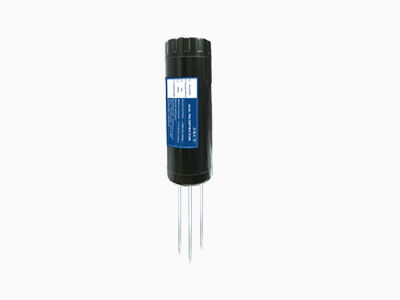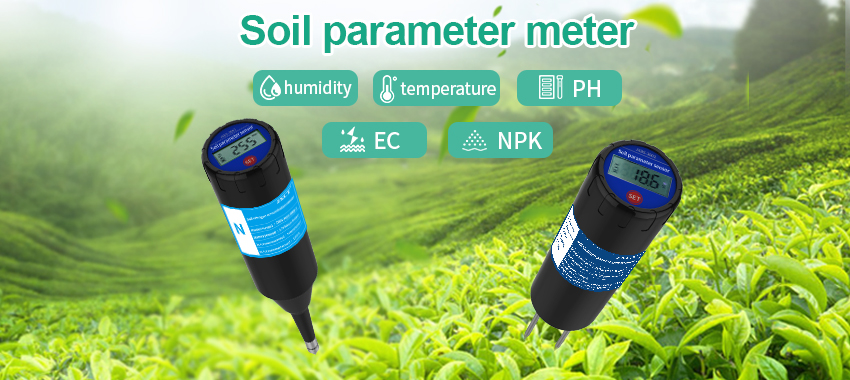Agriculture is a vital industry that sustains human life. However, traditional farming practices are often inefficient and wasteful, resulting in resource depletion and environmental degradation. To address these challenges, modern agriculture has embraced cutting-edge technologies such as soil sensor monitoring. Soil sensors provide real-time data about soil conditions, allowing farmers to make informed decisions regarding irrigation, fertilization, and crop management. In this article, we will explore how soil sensor monitoring can maximize resource efficiency in agriculture.

Understanding Soil Sensor Monitoring:
Soil sensor monitoring involves the use of specialized sensors that measure various parameters of the soil, including moisture content, temperature, pH levels, and nutrient levels. These sensors are typically placed in the ground at different depths to gather data from multiple layers of soil. The collected information is then transmitted wirelessly to a central system or directly to the farmer’s smartphone or computer.
Improving Irrigation Efficiency:
One of the key benefits of soil sensor monitoring is its ability to optimize irrigation practices. By monitoring soil moisture levels, farmers can determine when and how much water should be applied to their crops. This prevents over-irrigation, which can lead to water wastage and leaching of nutrients, and under-irrigation, which can result in stunted growth and reduced yields.
Traditionally
farmers relied on visual cues or manual measurement techniques to determine irrigation needs. However, these methods are often inaccurate and time-consuming. Soil sensor monitoring provides precise and real-time data, allowing farmers to apply water exactly when and where it is needed. This not only conserves water but also reduces energy costs associated with pumping and distribution.
Optimizing Fertilizer Application:
Another crucial aspect of agriculture is the application of fertilizers. Soil sensor monitoring plays a vital role in optimizing fertilizer usage by providing insights into the nutrient levels present in the soil. By analyzing this data, farmers can determine the exact amount and type of fertilizers required for optimal crop growth.
Over-fertilization can lead to nutrient runoff
causing water pollution and ecological damage. Under-fertilization, on the other hand, can result in nutrient deficiencies and reduced yields. Soil sensor monitoring helps farmers strike the right balance by providing accurate information about the nutrient composition of the soil. This enables targeted and efficient fertilizer application, reducing costs and minimizing environmental impact.
Enhancing Crop Management:
Soil sensor monitoring also aids in effective crop management. By monitoring soil temperature and pH levels, farmers can ensure that the conditions are favorable for their crops. Certain crops thrive in specific pH ranges, and deviations from these optimal values can negatively impact growth and yield.
Additionally
soil sensors can detect anomalies such as salinity levels or the presence of harmful substances in the soil. This early detection allows farmers to take proactive measures to mitigate any potential damage to their crops. By identifying problems at an early stage, farmers can prevent disease outbreaks, reduce crop losses, and optimize overall farm productivity.
Data-Driven Decision Making:
The data collected by soil sensors is invaluable for making informed decisions in agriculture. Advanced analytics and machine learning algorithms can analyze this data to provide actionable insights. For example, historical data combined with weather forecasts can help farmers predict irrigation requirements and adjust their schedules accordingly.
Furthermore
soil sensor monitoring can be integrated with other agricultural technologies such as drones and automated machinery. Drones equipped with soil sensors can scan large areas of farmland and generate detailed maps indicating variations in soil properties. This information can guide farmers in implementing site-specific management practices, such as variable rate irrigation or fertilizer application.
Challenges and Future Directions:
While soil sensor monitoring offers immense potential, there are challenges that need to be addressed. One significant challenge is the cost of deploying and maintaining the sensors, especially for small-scale farmers. However, as the technology matures and becomes more widely adopted, the cost is expected to decrease, making it more accessible to all farmers.

Another challenge is ensuring the accuracy and reliability of the data collected by the sensors. Factors such as sensor calibration, placement, and environmental conditions can affect data quality. Regular maintenance and calibration protocols need to be established to ensure accurate readings and consistent performance.
In the future, advancements in soil sensor monitoring will likely focus on miniaturization, cost reduction, and automation. Smaller, more affordable sensors will enable widespread adoption across various scales of farming operations. Additionally, integrating soil sensors with Internet of Things (IoT) platforms and cloud computing will enhance data analysis capabilities and enable real-time decision-making.
Conclusion: Soil sensor monitoring is a promising technology that can revolutionize agriculture by maximizing resource efficiency. From optimizing irrigation and fertilizer application to enhancing crop management and enabling data-driven decision-making, soil sensor monitoring has the potential to significantly improve farm productivity and sustainability. As technology continues to advance and costs decrease, soil sensor monitoring will become an indispensable tool for farmers worldwide, contributing to a more efficient, environmentally friendly, and resilient agricultural industry.
